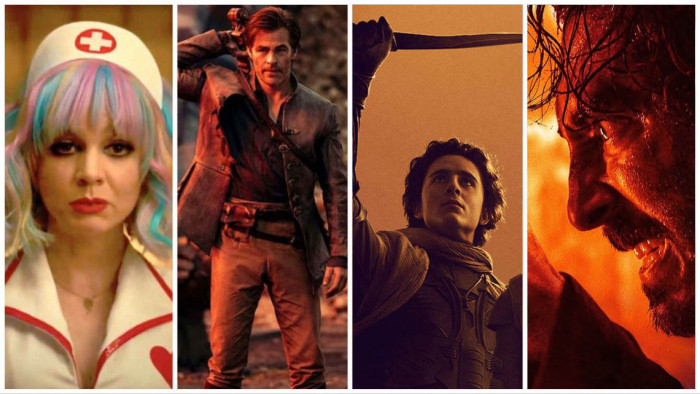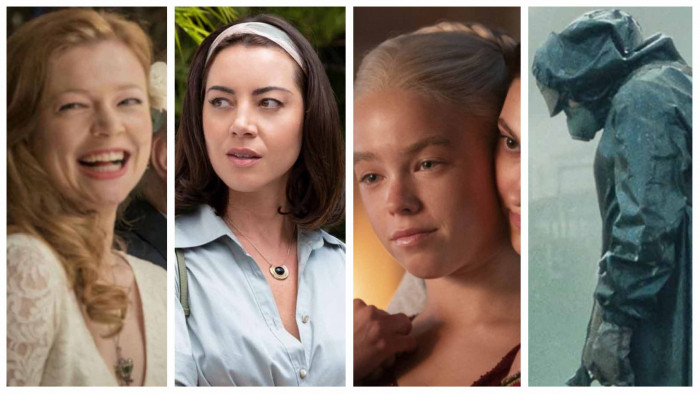The quiff, the cigarette, the raw masculinity — he was undeniably cool, but could he really act? On the week that would have seen the icon turn 80, ShortList’s Jim Butler weighs up the evidence
As the 83rd Academy Awards reaches its dramatic finale on 27 February 2011, there’s not a dry eye in the Kodak Theatre. The great and the good of the silver screen have risen to honour one of their own, perhaps, even, the greatest Hollywood has ever seen.
With Marlon Brando and Paul Newman no longer with us, he’s arguably the last titan of his generation, and now, having just turned 80, his descendants are paying tribute to his storied career with a Lifetime Achievement Oscar. Take a bow, no, not Clint Eastwood, but Mr James Dean.
Alas, this was not to be Dean’s destiny. The films may have taught us to suspend disbelief regularly enough, but even Tinseltown’s sorcerers of illusion can’t bring the dead back to life. Unlike Eastwood, born just a few months before Dean in 1930, he didn’t go on to make (either as star or director) nigh on 100 movies.
Instead, he was dead at 24, just days after completing work on the epic Giant, and with only two other films to his name, East Of Eden and Rebel Without A Cause. Yet he was to become a cultural icon; the archetypal disobedient and sullen angry young man, an iconoclastic non-conformist who would inspire bands and musicians such as Elvis, Bob Dylan, Morrissey, The Clash and John Lennon (who noted that without whom “The Beatles would never have existed”) and successive generations of actors such as Warren Beatty, Al Pacino, Johnny Depp, Brad Pitt and, most recently, James Franco.
His sudden, stratospheric rise and equally shockingly abrupt death coincided with the birth of the ‘teenager’ (with whom he is forever mired), the emergence of rock’n’roll and the materialisation of the modern world as we know it today.
Reluctant rebel
The actor Martin Landau, a close friend and contemporary of Dean’s, has explained this symbiosis: “Jimmy represented something that was happening in the States after the Second World War. Until that moment in time, grown-ups — adults — set the styles for clothing, set the styles for music, set the styles for everything that was going on.”
Allied to his premature and violent demise, it’s easy to see why Dean’s image, his perceived attitude, indeed, the entire mythology that has built up around him in the wake of his death in a car crash on 30 September 1955, has endured. For spin-doctors, ad men and stylists he is easy shorthand for rebellion, whether conferred or assumed. Today, even clean-cut idols such as Robert Pattinson and Zac Efron still tap into this idea when they imitate the Dean ‘look’ in photoshoots.
But was this the real James Dean? Speaking exclusively to ShortList, Bill Bast, a friend and former roommate of Dean, who went on to have a successful career as a screenwriter, bridles at the notion of Dean the ‘rebel’.
“In life,” he says, “his aim wasn’t to stir up youth and get them to emulate him, though that appears to be what has happened in fact. He never spoke about changing the world. It wasn’t like him to boast so grandiosely. But regarding his own future he had great determination, which I found admirable. If he’s known more for rebellion that has to do with the Warner Bros [the studio he was contracted to] PR machine than anything.”
Indeed, lest we forget, Rebel Without A Cause, the film that did most to cement Dean’s status as this societal outcast, only came out post-death. The power that Dean possessed as an icon and a totem for youth came after his untimely passing. In fact, venerable journalist Ray Connolly, who in 1975 directed the documentary James Dean: The First American Teenager, believes that Dean is iconic for the wrong reasons. “He’s remembered as a moody teenage poster boy,” Connolly says. “And actually he was an extraordinarily good actor.”
He’s right. Watching Dean’s roles today one can’t help but marvel at the depth of his talent. His instinctive portrayals of the confused Cal Trask in East Of Eden, the troubled Jim Stark in Rebel… and the proud Jett Rink in Giant mirrored the changes occurring in western society.
In today’s cynical information age, it may seem fanciful to think that an actor’s onscreen presence could chime with a generation, but back in 1955, this is exactly what happened. Connolly, who was 14 when East Of Eden (the only film released in Dean’s lifetime) premiered, remembers what it was about Dean that so captured the imagination.
“It was the reality of his performance,” he recalls. “All the films I had seen before then were based around people reading lines, as in a play onstage. Suddenly, these people — James Dean and Julie Harris — seemed to be saying things that they were making up as they went along. Now, I know that’s called improv these days, but back then I just thought, ‘Gosh, this is so realistic.’ It was the first time I’d seen anything like it.”
Style revolution
Alongside the other seismic events happening in society in the mid-Fifties, this style of method acting — heavily indebted to New York’s Actors Studio which was developing a reputation for producing temperamental actors such as Brando — seemed to signal a shift from the old Hollywood overnight.
“It was a total break,” Connolly suggests, “and I suspect that old Hollywood didn’t like him much. I know that when they made Giant, Rock Hudson hated him. You see, the main actors of that time — Clark Gable, John Wayne and Kirk Douglas — were straight, wooden men who spoke very clearly. All of a sudden you had this guy who looked little more than an adolescent managing to convey emotions. That scene in East Of Eden when he breaks down in tears with Raymond Massey… men just didn’t do that then. We all related to him.”
This defiance in his acting is mirrored in his personal style. Whether it be slouching around in chinos, pounding the streets of Manhattan with tousled hair and an obligatory cigarette or his classic red jacket, white T-shirt and jeans pose in Rebel…, he was the epitome of cool. Fashion journalist Peter Lyle knows why. “He was very assured in his dress,” he says. “If you look at Brando in The Wild One in comparison to Dean in Rebel…, Dean looks more effortless. Plus, you never see a bad photo of him. There are bad pictures of Clint before he became Clint and there are bad pictures of Warren Beatty when he looked clean-cut. You never see bad pictures of Dean.”
Now 55 years since his death, his complex legacy lives on. His ubiquity as a commodified and even sanitised rebel may have waned over recent years, but that only serves to highlight his talents as an actor. He was always more than a cute Athena poster denoting accepted rebellion.
Had he lived, who knows what awaited James Dean? A career as varied and venerated as Newman? Or a slow descent into obscurity, only to be revitalised by Quentin Tarantino? How would he have coped with middle age? Maybe he’d have succumbed to Scientology? Perhaps he’d have moved behind the camera à la Eastwood?
“I continue to be amazed that people still talk about him to this day,” admits Bast. “And it makes me sad that he didn’t live long enough to enjoy his fame.”
Dying so young sealed Dean’s fate as a cultural icon. But it was more than that. Call it luck, fate or destiny, but Dean’s emergence coincided with much of what we take for granted today. He was modernity; moreover, he was a brand new man. One thing’s for sure; if he hadn’t have lived, someone would have had to invent James Dean.
Images: Rex
Latest
Related Reviews and Shortlists


The 10 best war movies of the 21st century









